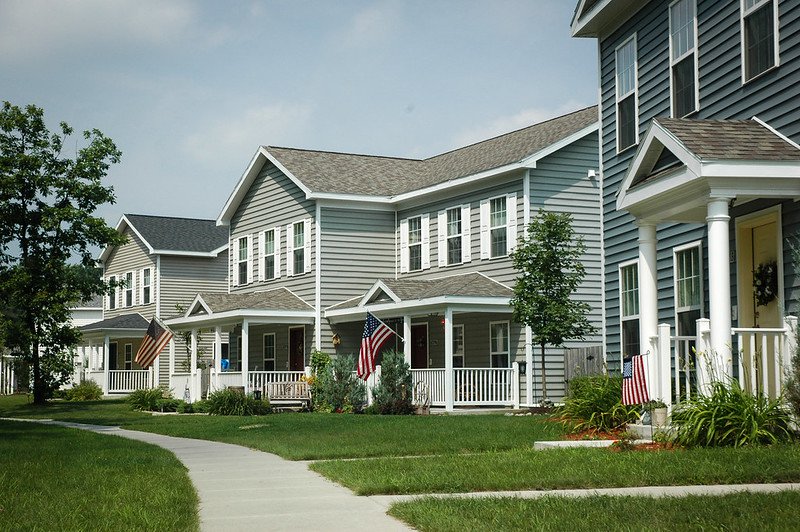
Fort Drum Privatized Housing
In this article:
You’ve no doubt had to decide between living on base or in off-base housing. You’ve heard or maybe even experienced that base housing offers a close military community, a quick commute to work, and a (usually) safer environment to raise the kids.
Perhaps the military member’s job requires you to reside in military housing, and the decision is out of your hands. Otherwise, you’ve undoubtedly debated whether to live off base or on. But in your reasoning, have you ever stopped to look at the force behind these military communities? Today on-base housing is privatized and managed by five companies.
But it hasn’t always been that way.
The History of Privatized Housing
If you’ve been in the military long enough or grew up in the military community, then you know that base housing didn't start privatized. In 1996, Congress created the Military Housing Privatization Initiative (MHPI) under the National Defense Authorization Act.
Traditional government housing was a collection of neglected homes in desperate need of repair (DOD reports showed that two-thirds of homes needed repair or replacement at the time of the MHPI). Outsourcing construction and maintenance of military housing to private companies seemed to be the answer.
These are the five base housing property management companies we know today:
These companies agreed to operate and maintain military housing in exchange for the full BAH of service members living there while basing their business models on an expected occupancy rate.
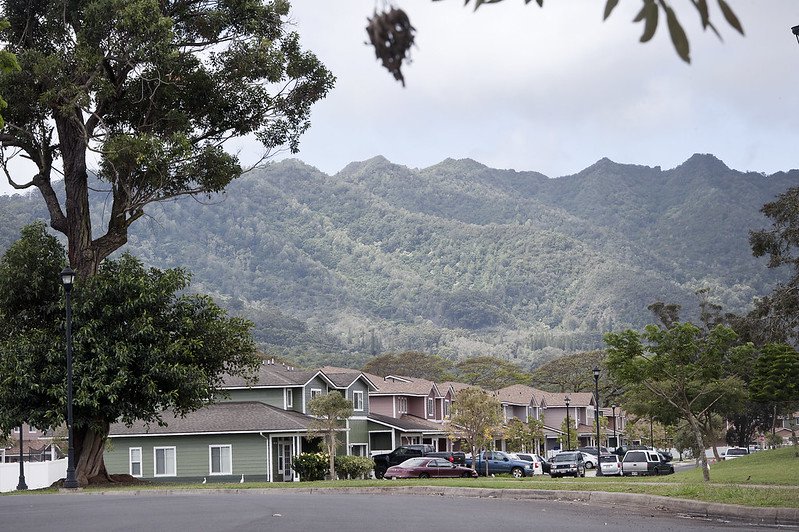
Housing in Schofield Barracks, Hawaii
What Privatized Housing Looks Like Today
These companies signed a 50-year lease agreement to build and rebuild homes, improve neighborhoods, and manage properties with the overarching goal of improving the quality of base housing.
But unless you’ve established residency outside the gates and managed to tune out the running monologue of military families everywhere, then you know that privatized military housing isn’t without faults.
In 2019, federal investigations exposed negligence. Housing conditions compromised residents' health. They linked health concerns to lead poisoning and exposure to mold and sewage.
In the spotlight most recently has been Joint Base Pearl Harbor-Hickam. While water quality is a known issue across many installations (Camp Pendleton and Camp Lejeune, to name a couple of them), 2021 brought light to a significant problem for Hawaii residents. In November, authorities revealed contaminated water at Joint Base Pearl Harbor-Hickam.
“In late November 2021, hundreds of families, living on Joint Base Pearl Harbor-Hickam (JBPHH) and the Army's Aliamanu Military Reservation and Red Hill Housing, reported petroleum odors coming from residential tap water supplied by the U.S. Navy water system; there were also reports of health issues arising from the contaminated drinking water. Approximately 93,000 U.S. Navy water system users are impacted, many of whom remain in temporary housing due to the drinking water crisis. The source of the petroleum was the nearby Red Hill Bulk Fuel Storage Facility, which contaminated the Red Hill Well, the Navy's primary source for its water system.” -U.S. Environmental Protection Agency
Military members and their families showed numerous physical symptoms, and the issue was so embedded in the water supply that it was cut off and took until March 2022 to rectify.
Learn more: Living in Military Housing: What You Need to Know
The Big 5 Privatized Military Family Housing Companies
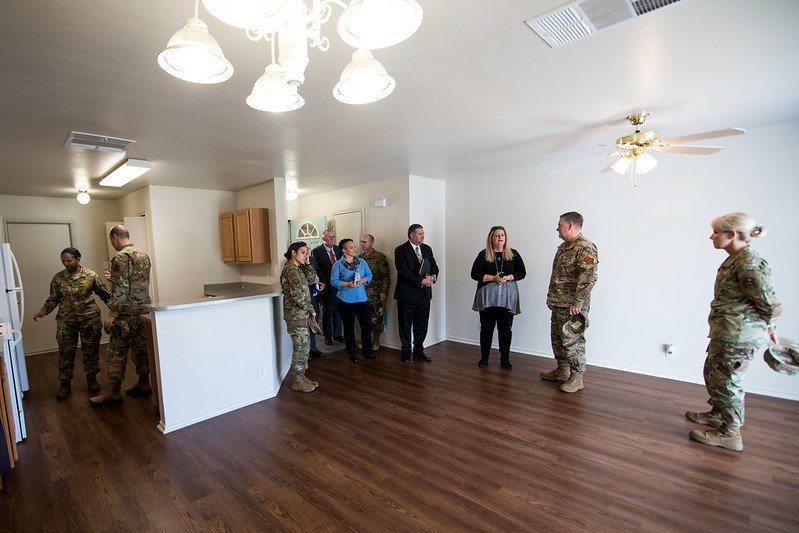
Joint Base San Antonio Housing: U.S. Air Force Lt. Gen. Brad Webb, commander of Air Education and Training Command, inspects improvements made in a housing unit, Jan. 24, 2020, at JBSA-Lackland, Texas.
“We are exceptionally proud of the important work we do for military families, from providing new housing and significant renovations and refurbishments to existing housing, as well as more responsive property management and maintenance support.”
Providing over 43,000 homes across 55 different military installations across the U.S., Balfour Beatty is the largest provider of military housing. They aim to pave the way for future generations by using creative recycling and reuse programs, building to the LEED and National Green Building Standard, and committing to alternative energy solutions (including an industry-leading rooftop solar program).
Balfour Beatty prides itself on its award-winning LifeWorks program and on bringing the community together through planned events. From fitness clubs and seasonal crafts to cooking classes and community gardens, they strive to get neighbors outside and socialize with each other.
Balfour Beatty Housing Locations
Alabama
- Retreat at Schillinger
- Riverchase Landing
Arizona
California
- Beale AFB
- Travis AFB
- Vandenberg SFB
Colorado
Connecticut
Florida
- Landings at Lake Gray
- NAS Jacksonville
- NAS Key West
- NAS Pensacola
- NS Mayport
- NSA Panama City
- Preserve at Zephyr Ridge
- Spring Valley Club
- Tyndall AFB
- Waterchase Apartments
- Whiting Field
Georgia
- Fort Gordon
- Fort Stewart
- Hunter AAF
- Lakeview Terrace
- Mainstreet at Conyers
- Marne Point Apartments
- Mission Creek
- NSB Kings Bay
- Olive Terrace
Idaho
Indiana
- Aspire at Discovery Center Park (Lafayette)
Iowa
- Aspire at West Campus (Iowa City)
Maine
Maryland
- Fort Detrick
- Glen Haven (Wheaton)
Michigan
- Ramblewood Apartments (Wyoming)
- Woodlake Apartments (Wyoming)
Mississippi
- NAS Meridian
- NCBC Gulfport
- Ridgeplace Apartments
Missouri
- Fort Leonard Wood
- Whiteman AFB
Montana
New Jersey
- Lakehurst JBMDL
- NWS Earle
- Picatinny Arsenal
New Mexico
- Cannon AFB
- White Sands Missile Range
New York
- Fort Hamilton
- Mitchel Field
- Old Brick (West Point)
- NSA Saratoga Springs
- West Point
North Carolina
North Dakota
- Cavalier AFS
- Grand Forks AFB
- Minot AFB
Oklahoma
Pennsylvania
Rhode Island
South Carolina
- Avenue at Harbison (Columbus)
- Fort Jackson
- JBWS Charleston
Tennessee
- Preserve at Bartlett
- Preserve at Southwind (Memphis)
Texas
- Dyess AFB
- Fort Bliss
- Lackland AFB
- NAS JRB Fort Worth
- Northside (Richardson)
- Rio Bravo (El Paso)
- Sheppard AFB
Virginia
- Joint Base Fort Eustis
- Fort Story (Virginia Beach)
Washington
Wyoming
“Liberty Military Housing is here to serve those who serve our country. Our team members bring a deep dedication and personal connection to our mission, our residents, and one another, resulting in an outstanding quality of life for the service members and their families who live in our communities. We work hard while always doing our best to embody the fundamental values that guide our decisions and actions.”
The company was established in 1965. They build and manage everything, including residential, commercial, retail, office, and other properties.
In 2001, Lincoln signed a partnership with the U.S. government. In 2021, Lincoln sold the company to its employees and is now known as Liberty Military Housing. Today, they manage over 36,000 homes on 30 military installations across the country.

Camp Pendleton housing, image via Lincoln Military Housing.
Lincoln Military Housing Locations
Arizona
California
- Camp Pendleton (MCB)
- China Lake (NAWS)
- El Centro (NAF)
- Lemoore (NAS)
- Miramar (MCAS)
- San Diego (Naval Complex)
- Seal Beach (NWS)
- Twentynine Palms (MCAGCC)
- Ventura (NBVC)
D.C.
- Joint Base Anacostia-Bolling (JBAB)
Georgia
Maryland
- Annapolis (NSA)
- Indian Head (NSWC)
- Patuxent River (NAS)
- Thurmont
Missouri
North Carolina
Nevada
Pennsylvania
Texas
Virginia
- Dahlgren (NSF)
- Little Creek (NAB/JEB)
- Naval Station Norfolk
- Northwest Annex (NSA)
- Oceana (NAS)
- Portsmouth (NMC)
- Quantico (MCB)
- Yorktown (NWS)
“Hunt is honored to serve those who serve us. We understand the sacrifice and commitment you and your family make every day and for that we thank you.”
Hunt Military Communities is a well-seasoned housing provider for military families, offering over 43,000 homes on Army, Navy, Marine Corps, and Air Force installations.
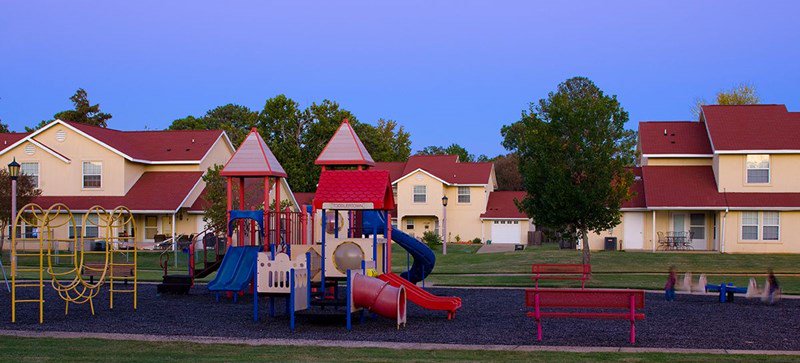
Housing on Maxwell AFB, image via Hunt Military Communities.
Hunt takes pride in its customer service and property management awards from CEL & Associates A-List and Platinum Awards, Professional Housing Managers Association Property of the Year, ENR Southwest Best Projects Award, Institute for Real Estate Management Associate of the Year, and more. Hunt also gives back.
Once a year, on Helping Hands Day, Hunt Military Communities employees get out of the office and into the community to help local organizations.
In 2018, Hunt launched a non-profit organization Hunt Heroes Foundation (HHF). Through it, they focus their support on the people who live in their communities. To support military health and wellness, they partner with organizations such as wear blue: run to remember and Stop Soldier Suicide.
Hunt helps provide financial support to those military families looking to further their education with a scholarship fund.
Hunt Military Housing Locations
Alabama
- Maxwell AFB
- Redstone Family Housing
Arkansas
California
Colorado
- Buckley SFB
- United State Air Force Academy
Delaware
Georgia
Hawaii
- Joint Base Pearl Harbor-Hickam
- MCB Hawaii
Florida
Illinois
- Great Lake Family Housing
- Scott AFB
Indiana
Louisiana
Mississippi
Nevada
New Mexico
Oklahoma
South Carolina
- Joint Base Charleston
- Shaw AFB
South Dakota
Tennessee
Texas
- Dyess AFB
- Goodfellow AFB
- Kingsville NAS
- Laughlin AFB
- Randolph AFB
- The Village at Cottonwood Springs
Virginia
Washington
- NAS Everett
- NAS Whidbey
- Naval Base Kitsap
- The Landings
“Lendlease creates communities that regenerate our environment, enrich people’s lives and foster economic growth throughout the United States.”

Aerial view of Soaring Heights Communities, Davis-Monthan Air Force Base privatized housing.
Headquartered in Sydney, Australia, Lendlease is an international provider. Their projects extend beyond privatized military housing. You don’t have to be an architect to know some of their more famous endeavors.
“Lendlease has been entrusted with many projects of public, cultural, and social significance: constructing the Sydney Opera House, creating the National September 11 Memorial & Museum in New York, and restoring and renovating historic buildings such as London’s Tate Britain and National Theatre.”
Lendlease completed over 40,000 homes across the US while prioritizing health and safety, sustainability, and customers.
Lendlease Military Housing Locations
Alaska
- Fort Greely
- Fort Wainwright
Arizona
California
Colorado
- Peterson SFB
- Schriever SFB
Hawaii
- Fort Shafter
- Helemano and Tripler AMC
- Joint Base Pearl Harbor-Hickam
- Schofield Barracks
- Wheeler AAF
Kentucky
Louisiana
Massachusetts
New Mexico
New York
- Fort Drum
- Stewart Air National Guard
North Carolina
- Camp Lejeune MCB
- MCAS Cherry Point
South Carolina
- Beaufort MCAS
- Beaufort Naval Hospital
Texas
“Corvias pursues the kinds of partnerships that materially and sustainably improve the quality of life for the people who call our communities home, purposefully choosing to partner with organizations who share our values and whose mission is to serve as the foundational blocks, or pillars, of our nation.”
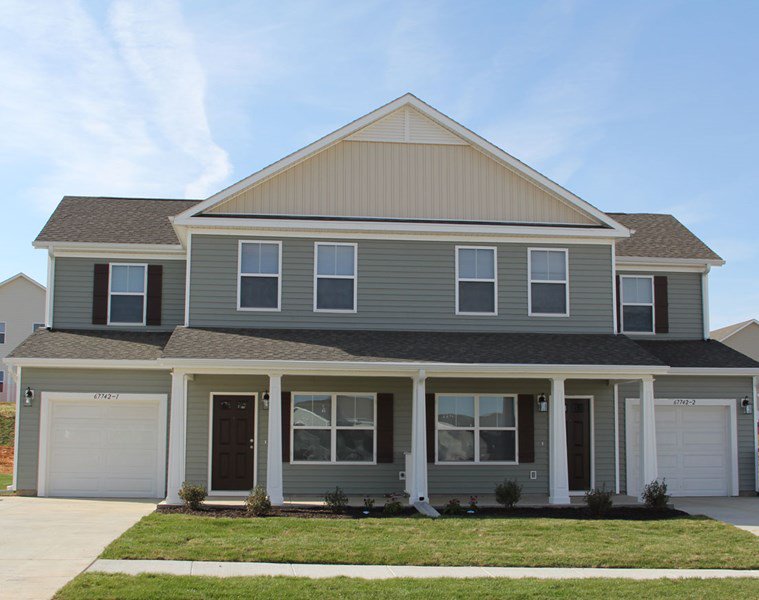
Home on Fort Riley, via Corvias Property Management.
Corvias was founded in 1968 and named Picerne Military Housing as a fully integrated development, construction, and property management company working to create a quality living environment for military families.
In 2006, the company started the Corvias Foundation. In awe of the military families they serve and the sacrifices they make, the Foundation paves the way for Corvias to expand higher-education opportunities. The company provides support for military kids, recognizes the unemployment rate among military spouses, and offers scholarships as a way to assist financially.
Corvias Military Housing Locations
Alabama
Alaska
California
Florida
Kansas
Louisiana
Maryland
- Aberdeen Proving Ground
- Fort Meade
- Reece Crossings (Fort Meade)
North Carolina
- Fort Bragg
- Randolph Point (Fort Bragg)
- Seymour-Johnson AFB
Oklahoma
The Future of Privatized Military Housing
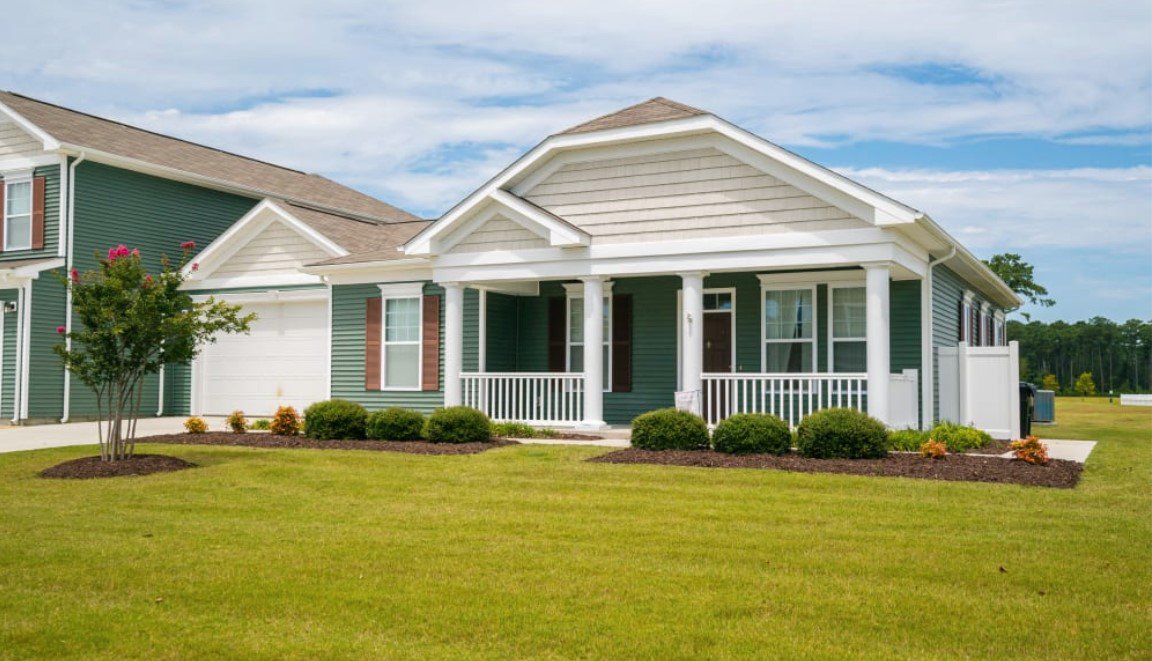
After recent events, military families are asking, Where do we go from here? What happens if the Military Privatization Housing Initiative, that's here to ensure a higher quality of living conditions for military families, falls short?
After reviewing the evidence of military housing shortcomings, the Senate Armed Forces Committee earmarked $300 million for military housing oversight and created a Tenant Bill of Rights for military families living on base. This new Bill of Rights includes 15 rights with the intent to provide safe, quality, and well-maintained homes on DOD installations.
“The major takeaways from the entirety of the correction process revolve around more oversight from both the housing companies and military leaders. More importantly, however, is the ability of military families to have a voice. Proposed legislation puts the power back into the hands of service members and their families through various resources such as the Army’s Housing Office and the implementation of resident customer care advocates hired by the military.” -Dawn M. Smith, What’s the Future of Military Housing?
The next question on everyone’s mind is, will it stick? While the promise of action toward the concerns of military families is comforting and reassuring, some doubt that it’s sustainable—after all, the deterioration and neglect of military housing has already happened.
Is On-Base Housing Right for You?
While you’re likely familiar with the perks associated with living on and off base, the decision varies family to family. And the answer comes down to your priorities and even what’s required of the servicemember.
If buying a home is on the table, you can likely find a nicer house for your money off base. If you want to live under BAH or you want separation from work, then living off base is probably the right fit for you.
However, some military members are required to live on base due to location, their type of job, or designated housing for certain positions. But even if you have a choice, you may still feel more comfortable living within the military community.
Learn more:
If you live on base, here are two things that you can do to help:
- Properly maintain your home. Perform the regular maintenance tasks you’re required to do and place routine work orders.
- Complete the housing survey. Each year, you should receive a survey that allows you to voice your concerns or offer praise for areas your housing community does right.
While privatized military housing companies need to maintain safe, habitable homes, residents need to continue to raise concerns when warranted. With consistency and diligence, there's hope for quality military housing.
By Danielle Keech


back to top